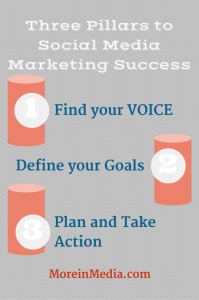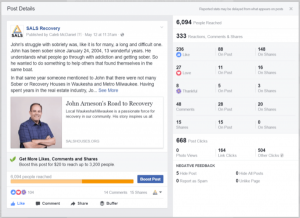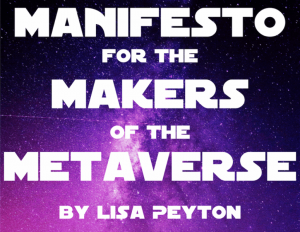September 27, 2016

If you’re looking to fill a role as a recruiter, what does the perfect candidate look like?
With the majority of candidates being passive, how do you know exactly where to find them? Once you find them, how do you know what to say to them? Which perks do you focus on? How do you attract them to your organization?
It’s becoming harder and harder for organizations to attract the best and brightest talent.
This is where creating candidate personas come in.
A candidate persona is a fictional representation of your ideal candidate, based on data and an educated guess about their goals, dreams, fears, and background.
It might seem like a relatively unimportant exercise, but trust me when I say that this can exponentially increase your success rate in attracting and retaining candidates.
It will also help you build an incredible pipeline of passive candidates.
Once you have a persona in mind, you can really understand exactly where and how to put your efforts.
You’ll easily be able to:
- Create more relevant content for candidates (better job descriptions, job titles, etc.)
- Know where to advertise your job (which networks does your persona spend time on?)
- Frame your messaging to align with their goals and dreams
- Help you build your employer brand
We’ll look at how to build a candidate persona and then I’ll give you examples that you can use right away.
How To Build A Persona
You can ask anyone on your marketing team for help with this, since they’ve been building buyer personas for years, but in my opinion, there are two things you need to do to build a perfect candidate persona:
- Use the data you have
- Make educated guesses about what they want
Using The Data You Have
The first, and most obvious way of creating a persona, is to focus on stuff you already have access to.
Your employees, managers, and HR data can be a great first source of information.
Your Employees
A great idea to get you started on building the perfect candidate persona is to start with your already existing employees.
Chances are, your current employees have many of the qualities of a persona you’re looking for.
Conduct interviews with some of your top employees to find out everything you can about who they are.
Some examples of things you could ask them:
- What do you like about our culture?
- What are some of your favorite websites/communities?
- What’s your background? Where did you study/used to work?
- Where do you see yourself in 3-5 years?
- What’s your favorite perk/benefit that we offer?
- What do you like about our culture?
Your Hiring Managers
Another great source of information are the hiring managers in your organization.
Try to find out what they look for in a typical candidate.
- Where did their top performers come from?
- How much experience did they have?
- What are 2-3 skills the perfect candidate has?
Once you have a good idea after interviewing a few managers, you’ll start to notice a pattern of what the perfect candidate looks like.
- Where did their top performers come from?
Your HR Data
Another thing you could use to build an idea of a profile is your HR data. If you look through what you have and try to find trends and patterns, you might be able to get some answers you’re looking for.
For example, if you see that your top performers all came from a specific school or company, or if your most tenured employees all had a certain commonality you’ll be able to have a deeper understanding into what you need.
Make An Educated Guess
This is where it gets fun.
I recently gave a presentation to the Officevibe marketing team about customer personas, based on a class I’m taking by Ramit Sethi, the king of content in my opinion.
In the class, he talks about something called the Customer Desire Map.
He describes it like this:
Before we write even a single word, we need to get into our customers’ heads and identify the specific words and phrases they use to describe their problems, using a framework called the Customer Desire Map.
The way it works is by mapping out your customers’ (in your case, candidates) desires.
You do this by focusing on three things:
- Hopes & Dreams
- Pains & Fears
- Barriers & Uncertainties

You’ll want to come up with 3-5 things for each section, written in the first person, to help you understand their frame of mind.
What do they want out of a career? What are they scared of? What’s holding them back from finding that perfect company?
Once you do this exercise for your candidate persona, you’ll have a much clearer picture of what they want to achieve, helping you to position your messaging (employer branding) to attract the exact person you’re looking for.
Important Note: In order for this to be successful, you need to write out the sentences for each section (Hopes & Dreams, etc.) in the first person. Really do it as if it was the actual candidate writing this.
Example Of A Candidate Persona
Let’s look at an example of how we would do this for a manager position, we’ll call her Mary the Manager.
Mary The Manager
Hopes & Dreams
- I want to one day become the Director of a large department
- I want to be able to have a nice work-life balance, where I’m able to work, but also watch my kids grow up
- I want to empower my team to be the most productive they can be. I know that their success is my success
Pains & Fears
- I’m scared to have to manage a team of 10+ people. I’ve never even managed one person
- I’m afraid my team won’t get along well with each other
- If our team doesn’t hit our goals, I’ll look bad in front of my boss
Barriers & Uncertainties
- Will I have opportunities to grow in my role?
- What if I don’t have enough experience leading a team?
- What if the organization I work for has an old-school culture?
Now that you have all of this information to work with, you can start shaping your communication to this persona in such a way that you think they’ll find attractive.
For example, there was a focus on work-life balance, growing her team (and herself), and management experience.
So if you’re sending a cold email to someone or a Linkedin InMail, you can highlight the fact that your organization offers development opportunities and subsidizes training or the fact that work-life balance is important to the company.
Using this fake example, if I was going to send this persona an email, this is probably what I would write:
Hey Mary, I took a quick look at your Linkedin profile and I think you’d be a perfect fit at our company, ABC Widgets Inc.
I noticed you have a year of experience at XYZ Corp, I’m confident you’d make a great addition to our team.
A few reasons why I think you’d love it here:
- Work-life balance is incredibly important to us (I have 2 kids, I need to be able to spend time with them)
- We offer lots of advancement opportunities (we prefer promoting internal than hiring external)
- We’re heavily focused on culture and have some pretty amazing perks
Would you be open to a quick chat in the next week about an opportunity here?
Let me know,
Thanks!
PS: I also see that you play hockey in your spare time! Our company organizes an informal hockey game every Tuesday night, and we’ve been looking for a new goalie 😉
Have You Built Any Candidate Personas?
Let us know how you do it in the comments below!

Build your talent brand and learn how you can improve your recruiting efforts.
Business & Finance Articles on Business 2 Community
(91)










